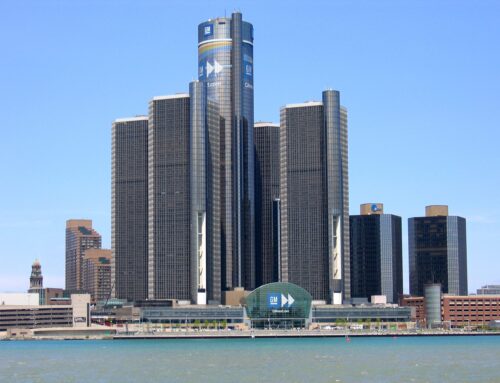Description and Details
Mossville, an enclave outside Lake Charles, Louisiana was a thriving African-American community founded by former slaves in 1790. However, due to a South African chemical company called Sasol, homes are being lost, and Mossville is slowly becoming a ghost town.
Before Sasol, Mossville was already a heavily polluted area. It’s said to be “the most polluted corner of the most polluted region in one of the most polluted states in the country”. The federal agency for toxic substances and disease registry tested the blood of 28 Mossville residents in 1998 and found that the blood contained three times the standard dioxins level. Sasol’s proposal of building the largest chemical plant of its kind could worsen the already poor health conditions and lead to the total abandonment of Mossville.
In December 2012, Sasol officially announced its plans to expand in Lake Charles, Louisiana. The project contains two parts: one is to build a new gas-to-liquid (GTL) facility, making use of the sinking natural gas price for profits, and the second facility is an ethane cracker. The ethane cracker uses ethane from natural gas to produce ethylene for alcohol and plastic products. The expansion has gone through extensive negotiations between Sasol and Louisiana officials and is to benefit both parties.
However, Sasol and Louisiana officials are not the only parties involved in this project. Mossville residents are also significant stakeholders involved. Nevertheless, their benefits are neglected to some extent. Many residents said they were just told, without negotiation in advance, even though Sasol claims they carefully talked with the residents about the arrangement. Sasol offers a buyout program to homeowners in Mossville and neighboring communities within a certain range for relocation. The name of the buyout program is Voluntary Property Purchase Program (VPPP) and is called by Sasol the “most general buyout plan of its kind”, but it doesn’t allow any negotiation on its purchase price. The buyout price of Mossville is 88% lower than that of Brentwood, another area eligible for VPPP. In addition to concerns about insufficient compensation to find new homes, many residents express ties to the community.
A further look into VPPP reveals that it may be a disadvantage to Mossville residents. Brentwood’s community is made of 90% white people, while Mossville is 90% black. When it comes to the buyout program, they should have the same standard, so the same unit price. Since residents can’t negotiate, they don’t have a solid administrative force to speak out for them. Some residents are staying with the heavy pollution, while others move elsewhere, but feel pained to leave their family history behind with the little money from VPPP.
With the release of the film “Mossville: when great trees fall”, increased attention has been given to the events that occurred in Mossville. In November 2021, the head of EPA visited Mossville and later announced that more money would be invested in air pollution monitoring. Using helicopter flyovers and mobile air monitoring techniques provided by the EPA, Sasol facilities will be assessed for potential health risks. Further, Sasol is required by the EPA to address potential risk management plan violations found during the inspection. However, compared to pollution control, buyout inequality remains unsolved. Until July 2020, the buyout saw an 85% participation rate, and the original buyout plan is unchanged.
CEE subjects: Environmental Engineering, Geotechnical Engineering, Hydraulics and Hydrological Engineering, Environmental Fluid Dynamics, Environmental Policy and Sustainable Infrastructure, Environmental Justice, Air Quality
Discussion Questions
- Do you think what occurred in Mossville is an environmental justice issue? What factors contributed to the events that occurred here?
- How can we prevent similar problems from happening in the future? What protections are in place to ensure residents have a voice in industrial decisions in their communities? What protections are in place to protect homeowners against discrimination?
- During the process of negotiation and buyout, what aspects do you think can be improved to better resolve the tension between Sasol and the community? Who are the other stakeholders involved? Who is responsible for the consequences, such as the cleanup?
- How do you think a civil/environmental/chemical engineer may play a role in Mossville’s pollution? Do you think there is an opportunity to improve the area? What actions would you take as an engineer in the area to mitigate the pollution or raise awareness in the community?
- For residents remaining in the community, how could they be assisted with living around the surrounding pollution and health hazards?
References
- Peer-reviewed articles
- Popular media/news references
- A chemical firm bought out these Black and white US homeowners – with a significant disparity
- Touring Louisiana’s Chemical Ghost Town
- Vanishing Black community of Mossville set for visit by EPA head
- THEY DIDN’T PAY US FOR OUR MEMORIES: Environmental Racism, Forced Displacement, and the Industrial Buyout of Mossville, Louisiana
- Louisiana Man Takes a Stand Against a Petrochemical Giant
- ERASING MOSSVILLE
- A Massive Chemical Plant Is Poised to Wipe This Louisiana Town off the Map
- EPA takes action to combat industrial air pollution
- ICYMI: On his Journey to Justice, EPA Administrator Michael S. Regan Toured Historically Marginalized Communities in the American South, Highlighted Benefits of Bipartisan Infrastructure Law
- ‘Startling’: EPA head pledges action for vanishing Black community of Mossville
- Journey to Justice
- Industrial Sources of Dioxin Poisoning in Mossville, Louisiana: A Report Based on the Government’s Own Data
- Journey to Justice
- EPA Administrator Regan Announces Bold Actions to Protect Communities Following the Journey to Justice Tour
- Books/memoirs




Leave A Comment